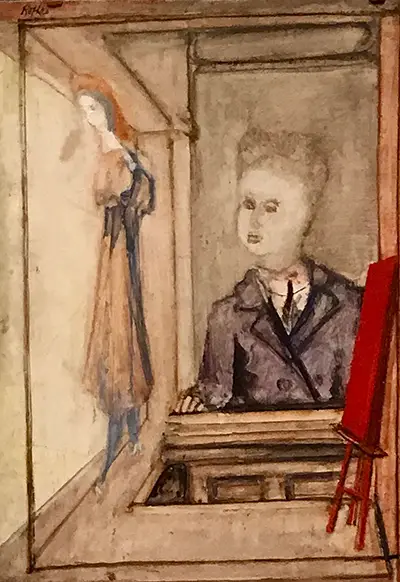Thru the Window
According to Mark Rothko, a painting has to express what viewers think rather than what they see, for it to be interesting. Mark’s drawings have been interpreted in terms of architecture and light as the creation of a sense of space or place, as well as spiritual duties. In one of the interpretations, you will find out that the subject of his canvases is the fate and origin of humanity as a spiritual drama. The clarification also alleges that the ending of this drama is not optimistic or affirmative.
How Rothko Unlocked the Emotional Power of Colour
You must be aware that the name Mark Rothko is identical to sensitive paintings that consist of rectangular panes in some vivid hues. In a few words, Mark Rothko was an accomplished colourist! The greatest joy of viewing and experiencing his canvases requires you to look at how the shapes, backgrounds, and colours to mix, especially around the corners.
The brushy and soft edges that surround his colour fields create a single mood. The sharp and straight lines found on the central forms gives another incredible mood.
What is Thru the Window All About?
The figure in Thru the Window painting seems to stare at something intimidating but unnoticed by the viewer. If viewed at an angle, the figure in the drawing is trapped by a specific vision. However, the vision in this canvas is virtually concrete. The drawing is a form of space that contains but decentres the viewer and the person within it. The theme used by Mark Rothko relates to the early Edward Hopper, surrealist de Chirico, and above all, Vermeer.
The meaning of Rothko drawings appears to contain the idea of space as something that concerns and traps an individual, the inner world of emotions, and communication difficulties. Most people may be tempted to propose that the hidden meaning in these canvases is a metaphor for the inner world of the unconscious and emotions. Others are tempted to view these arts as essential steps towards the effective format of his intellectual compositions. In fact, this group of people says that a painting's objective is to express reality via plastic means rather than through description.
What Inspired Mark Rothko to His Drawings?
Since he feared that the modern American canvases had gotten to a theoretical dead end, Mark saw it fit to explore subjects instead of natural and urban scenes. In fact, he followed subjects that complemented his growing concern with space, colour and space. In addition, he turned to Greek tragedy, ancient myth and Nietzsche.

